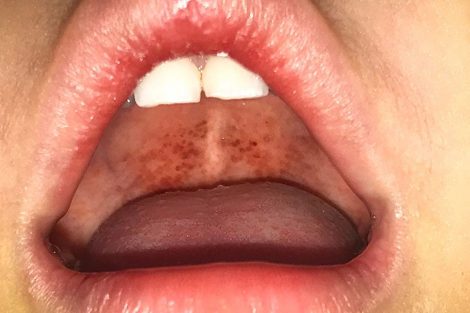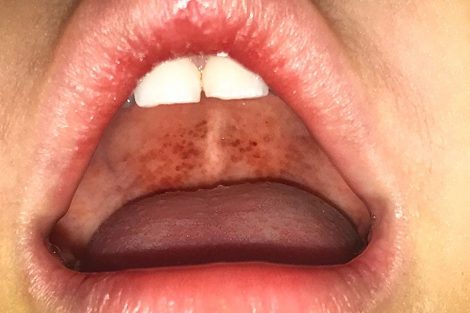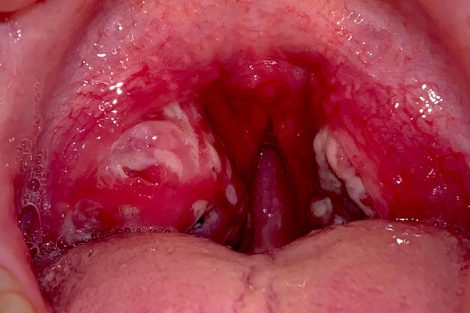1. Why are Strep A infections increasing?

IT’S thought that the Covid pandemic is the main reason we’re seeing a glut of Strep A infections, such as scarlet fever – and a corresponding rise in serious iGAS infections.
Lockdown and social mixing reduced the spread of Covid-19 but they also stopped the spread of childhood infections such as scarlet fever, which kids often catch in the first year of school, thereby removing opportunities for them to develop immunity through exposure.
Now we’re all meeting again, we’re faced with a large cohort of non-immune children being exposed to the bacteria, which is back in wide circulation – this is evident from more scarlet fever cases than usual being reported this year.
There are also lots of viral infections doing the rounds this winter and these enable bacterial infections like Strep A (which normally peak in late spring and early summer) to become more virulent and make you even more unwell.
2. What is Strep A? Infection signs and symptoms
There are two levels of strep A infections, namely GAS (group A strep) infections, which tend to be mild, and the more serious iGAS (invasive) infections.
Group A Strep (GAS) infection signs and symptoms
GAS infections tend to be more moderate than iGAS infections but can still cause uncomfortable illnesses and lead to more serious iGAS infections:
- Scarlet fever This infection is characterised by a fine red or pinkish body rash that feels like sandpaper, along with a sore throat, ‘strawberry’ tongue, headache and fever.
- Impetigo This mild skin condition is characterised by fluid-filled blisters. Your child may also have a temperature and swollen glands in their face or neck .
- Strep throat This sore, scratchy throat comes on quickly, causing painful swallowing, red and swollen tonsils (sometimes with white patches or streaks of pus) and tiny red spots on the roof of the mouth. It’s often accompanied by tender lymph nodes in the neck plus headache and fever.
Strep A infection pictures
Invasive Group A Strep (iGAS) infection signs and symptoms
The second – and more serious – type of Strep A infection is iGAS (invasive Group A Strep) where the bacteria gets through the body’s defences and into places it shouldn’t, such as the blood or lungs.
If you see any of these signs in your child, see a medical professional:
- A high fever that isn’t settling
- Severe muscle aches
- Pain in one area of the body
- A spreading redness on the skin
- A child who is breathless or having trouble breathing
- Excessive sleepiness or irritability
- A rash
- Confusion, dizziness or low blood pressure
- Abdominal pain
- A child who is getting progressively more ill.
Although iGAS infections are still uncommon, when they do occur they can be extremely serious and, in rare cases, can have fatal consequences.
3. How is Strep A spread?

Strep A bacteria is normally found in the throat and on the skin. In some people it causes no symptoms, while in others it does – here’s how it gets around and how you can minimise its spread.
- Sneezing and coughing. Strep A can easily spread when an infected person coughs, sneezes or even talks, because bacteria are spread by direct contact with nose and throat discharges from an infected person. You can also get it from close contact, such as kissing.
- Touching infected skin or liquid from lesions. Even items that have touched infected skin, such as towels, bed linen or clothing, can spread Strep A – for example, from impetigo lesions or mucus from a blown nose.
- Group settings increase the risk of Strep A spreading. For example, schools and care homes. Even though infections including scarlet fever are more common in children, adults are still at risk, especially those with school-aged children or those who work with children.
- Teach children good hygiene practices. Good hand and respiratory hygiene is important for stopping the spread of bugs including Strep A – for example, washing your hands properly with soap and warm water for 20 seconds, using a tissue to catch coughs and sneezes and keeping away from others when you’re feeling unwell. The same applies to children.
4. Strep A can be dangerous… but fatalities are rare
During a typical winter, one or two UK children under 10 die from Strep A complications, so the current situation isn’t ‘typical’.
Although GAS infections in children are circulating in the UK at a higher rate than expected, and fatalities from iGAS have risen in recent days, experts are keen to allay parents’ concerns.
Dr Camilla Kingdon, president of the Royal College of Paediatrics and Child Health (RCPCH), says: ‘It is a very common bacteria that can be treated with antibiotics, and serious complications from the infection are rare.’
If parents are at all worried about their child’s health, they should seek medical assistance from a pharmacist, their GP or by calling 111 as a first port of call.
5. Strep A can be treated with antibiotics

GPs have been told to ‘lower the threshold’ for prescribing antibiotics, to ensure they’re considered for children brought to them with what appears to be GAS infection.
As well as antibiotics, your child might also be given a throat swab to determine diagnosis, if they’re thought to be part of an outbreak, are allergic to penicillin or are in regular contact with vulnerable individuals.
A person who has a mild illness will stop being contagious around 24 hours after starting their medication, even if they’ve been feeling unwell.
Most Strep A infections will be treated safely at home with oral antibiotics, but in some cases they’ll need to be treated with intravenous antibiotics in hospital.
6. There’s no vaccine for Strep A
Experts including Professor Adam Finn, former president of the European Society for Paediatric Infectious Diseases, says there’s a desperate need to develop a Strep A vaccine, which can cause not only iGAS but can lead to complications including rheumatic fever and post-streptococcal glomerulonephritis (a kidney condition).
Several promising Strep A vaccine options have been developed since work started on it in the 1940s, yet some eight decades later one has never been made available, despite Strep A causing 500,000 deaths globally each year.
A 2020 review says there are several reasons for this, including a ‘lack of commercial interest and reluctance to invest’ and ‘the uncertainty for a market for a vaccine against strep A in high-income countries’.
A Strep A Vaccine Global Consortium (SAVAC), supported by the Wellcome Trust, is now working with the World Health Organisation on a proposal outlining the global health investment benefits of a vaccine.
In the meantime, the best course of action is to keep the spread of infection at bay by washing your hands, and to keep an eye on GAS symptoms in case they worsen.
7. What to do if you suspect your child has Strep A

If you feel that your child is seriously unwell, you should trust your own judgement and seek further help.
Contact NHS 111 if or your GP if:
- your child is getting worse
- your child is feeding or eating much less than normal
- your child has had a dry nappy for 12 hours or more or shows other signs of dehydration
- your baby is under 3 months and has a temperature of 38°C, or is older than 3 months and has a temperature of 39°C or higher
- your baby feels hotter than usual when you touch their back or chest, or feels sweaty
- your child is very tired or irritable.
Call 999 or go to A&E if:
- your child is having difficulty breathing – you may notice grunting noises or their tummy sucking under their ribs
- there are pauses when your child breathes
- your child’s skin, tongue or lips are blue
- your child is floppy and will not wake up or stay awake.






















